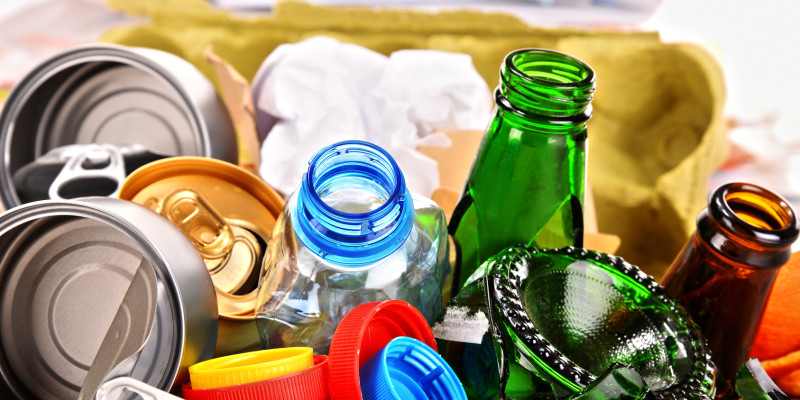In 2022, the dual systems achieved on average the very ambitious statutory targets for the recycling of paper/cardboard/cartons, tinplate, aluminium and plastic packaging and in some cases even significantly exceeded them. This means that significant quantities of these materials continue to be recycled. For plastic packaging, for example, the actual feed-in rate for mechanical recycling was 67.5 per cent, 4.5 percentage points above the statutory minimum – four years previously it was still well below 50 per cent.
On average across all dual systems, the statutory recycling targets for glass packaging, beverage cartons and other composite packaging were missed by a considerable margin in some cases. Nevertheless, over 50 per cent of the waste collected in the yellow bin continues to be recycled. According to Bettina Rechenberg, Head of Department at the UBA: “It continues to be the case that waste separation pays off! We are delighted with the positive recycling results of the dual systems, especially for metal and plastic packaging. We are currently particularly concerned about other composite packaging and the insufficient collection volumes for glass packaging. Unfortunately, consumers are still not putting enough used glass in the designated collection containers.”
Insufficient collection volumes for glass
According to a study by the UBA, glass packaging is generally highly recyclable, unless it is a rare special design, e.g. with opaque coatings. They can usually be melted down and used for new glass packaging – again and again. However, even the best packaging design is useless if the empty glass packaging is disposed of in the residual waste after use. They can only be recycled again – sorted by colour – in the glass container. However, collection volumes are falling, partly because too little attention is being paid to the importance of waste separation and there are fewer and fewer places for glass containers. As a result, smaller quantities are being utilised in the recycling plants and the valuable used glass is being lost. Compared to the previous year, the recycling rate achieved for glass has fallen by 3.4 percentage points, even though the Packaging Act requires a significant increase.
Is composite packaging the problem child?
Other composite packaging is often not easy to recycle, as a UBA study shows. Almost every second packaging with a recyclability of less than 90 per cent is composite packaging. At the same time, there are deficits in the recycling infrastructure. In the case of beverage carton packaging and other composite packaging, a larger proportion of recycling capacity has been withdrawn in 2022 due to high energy prices. However, this does not release manufacturers from product responsibility and the dual systems from complying with the legal requirements. If necessary, adequate prices must be paid to existing facilities or new recycling capacities must be created. There is an acute need for action here.
However, there is also a positive development in recycling technology for beverage carton packaging. Recently, it has become possible to recycle not only the paper fibres, but also the plastic and aluminium layers from beverage cartons. Thanks to these new technologies, beverage cartons can achieve a recyclability of over 90 per cent. Now the capacities still need to be increased and actually utilised.
Designing for recycling: Solution available for most packaging
Good recyclability of packaging is a prerequisite for high-quality recycling. In collaboration with the UBA, the ZSVR publishes an updated minimum standard every year to assess the recyclability of packaging that typically accumulates as waste with private end consumers. This takes account of packaging trends and new plant technologies. ZSVR board member Gunda Rachut is satisfied: “We have already achieved significant milestones on the road to high-quality recycling. Recyclable solutions exist for the majority of packaging on the market. In some areas, those involved are also working hard to develop plant technologies and capacities. Efficient cycles are essential in order to conserve resources.”
Fully recyclable or not recyclable at all – discrepancy despite clear guidelines
Packaging whose material or design does not allow for recycling can still be seen on the market. ZSVR board member Gunda Rachut explains: “The large gap between the highly recyclable packaging and other packaging is striking – this is either minimally recyclable or not recyclable at all. Since 2018, it has been transparently recognisable which packaging solutions cannot be recycled to a high standard. There are sufficient alternatives for this packaging. Why these are not used is unclear.” The range of packaging collected by the systems for which there is no quota requirement, for example packaging made of bamboo, wood, jute, ceramic or cork, is not recycled in practice. They are therefore particularly problematic.
 Click to enlarge
Click to enlarge
